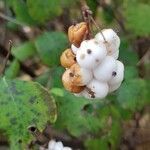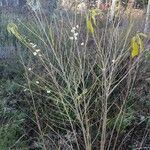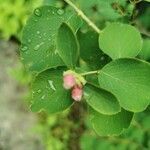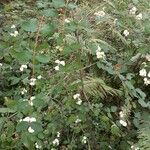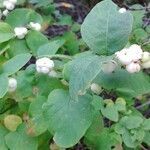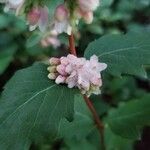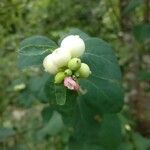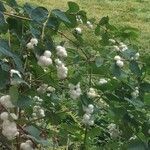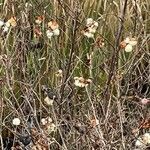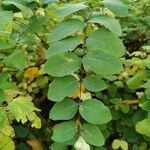Shrub to 1 m, the younger parts finely hairy or glabrous; lvs ovate or oval, usually hairy beneath, mostly 2–3 cm; fls in pairs on short pedicels or in few-fld, interrupted spikes; cor 5–8 mm, ventricose, the lobes equaling or merely half as long as the tube; anthers 1–1.5 mm, nearly or fully as long as the filaments; style glabrous, 2–3 mm; fr 6–10 mm, white; 2n=36, 54. Our native plants, as here described, are var. albus. The var. laevigatus (Fernald) S. F. Blake, of the Pacific slope, mostly 1–2 m, with the fr mostly 1–1.5 cm, and with the lvs usually glabrous beneath, often escapes from cult. Dry or rocky soil; Que. to s. Alas., s. to Va., Mich., Minn., and Calif. May–July. (S. racemosus)
A shrub. It grows 1.2-1.8 m high and spreads 1.2-1.8 m wide. The stems are wiry. It develops suckers. The flowers are pink and in clusters. The fruit are berries which are pale green but mature to pure white.
